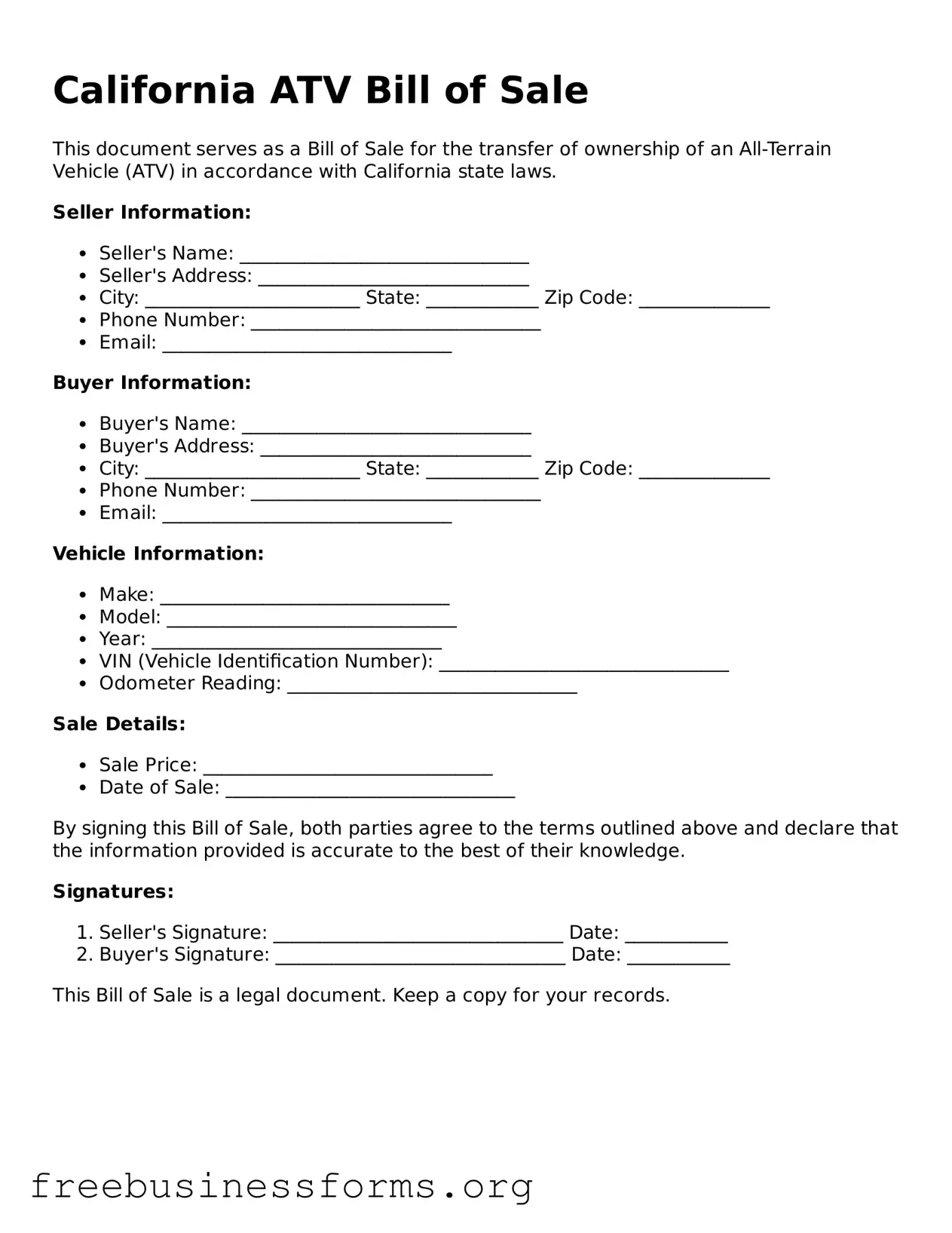California ATV Bill of Sale
This document serves as a Bill of Sale for the transfer of ownership of an All-Terrain Vehicle (ATV) in accordance with California state laws.
Seller Information:
- Seller's Name: _______________________________
- Seller's Address: _____________________________
- City: _______________________ State: ____________ Zip Code: ______________
- Phone Number: _______________________________
- Email: _______________________________
Buyer Information:
- Buyer's Name: _______________________________
- Buyer's Address: _____________________________
- City: _______________________ State: ____________ Zip Code: ______________
- Phone Number: _______________________________
- Email: _______________________________
Vehicle Information:
- Make: _______________________________
- Model: _______________________________
- Year: _______________________________
- VIN (Vehicle Identification Number): _______________________________
- Odometer Reading: _______________________________
Sale Details:
- Sale Price: _______________________________
- Date of Sale: _______________________________
By signing this Bill of Sale, both parties agree to the terms outlined above and declare that the information provided is accurate to the best of their knowledge.
Signatures:
- Seller's Signature: _______________________________ Date: ___________
- Buyer's Signature: _______________________________ Date: ___________
This Bill of Sale is a legal document. Keep a copy for your records.
